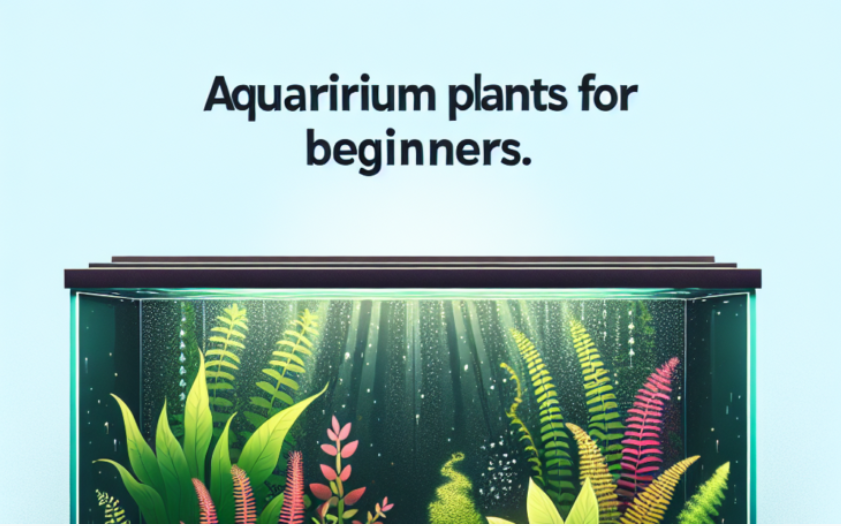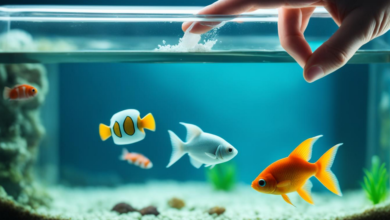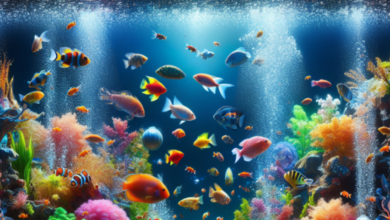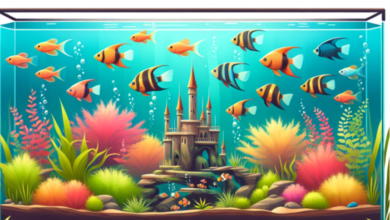Introduction
Are you a beginner looking to dive into the world of aquarium plants? If so, you’ve come to the right place! Adding aquarium plants to your fish tank not only enhances its visual appeal but also contributes to a healthy and balanced aquatic ecosystem. However, choosing the right plants can be overwhelming, especially for beginners. But fear not! In this guide, we will unveil the top 10 easy aquarium plants that are perfect for beginners like you. So, let’s get started!
1. Benefits of Aquarium Plants
Before we dive into the specific plants, let’s talk about the numerous benefits they bring to your aquarium. Aquarium plants not only provide a natural and beautiful environment but also offer several advantages such as:
– Oxygenation: Plants release oxygen through a process called photosynthesis, which is vital for the well-being of your fish.
– Filtration: Aquatic plants act as natural filters, absorbing harmful substances like ammonia and nitrates, thereby improving water quality.
– Algae control: The presence of plants helps control the growth of unwanted algae by competing for nutrients and light.
– Natural hiding spots: Aquarium plants create hiding spots for fish, reducing stress and providing a sense of security.
2. Considerations for Beginners
As a beginner, it’s important to consider a few factors when selecting aquarium plants:
2.1 Tank size and lighting
Different plants have varying light requirements. Consider the size of your tank and the type of lighting you have. Some plants thrive in low light conditions, while others require intense lighting.
2.2 Planting substrate
Choosing the right substrate is crucial for plant growth. Some plants need specific substrates, such as nutrient-rich soil or gravel, to flourish.
2.3 Maintenance and care
Consider the time and effort you’re willing to invest in plant maintenance. Some plants require regular pruning, fertilization, and CO2 supplementation, while others are low-maintenance.
Now that we’ve covered the basics, let’s dive into the top 10 easy aquarium plants for beginners!
3. Anubias (Anubias barteri)
Anubias is a popular choice among beginners due to its hardiness and low light requirements. This plant has thick, dark green leaves that add a touch of elegance to any aquarium. Anubias can be attached to driftwood or rocks and thrives in a wide range of water parameters.
4. Java Fern (Microsorum pteropus)
Java Fern is another fantastic option for beginners. Its long, flowing leaves create a beautiful underwater landscape. Java Fern is also versatile and can be attached to driftwood or left to float freely. It adapts well to various water conditions and lighting.
5. Amazon Sword (Echinodorus amazonicus)
The Amazon Sword is a popular choice for larger tanks. It has broad, vibrant green leaves that can grow up to 20 inches tall. This plant prefers nutrient-rich substrates and moderate to high lighting conditions. Regular pruning will help maintain its shape and prevent overcrowding.
6. Java Moss (Taxiphyllum barbieri)
If you’re looking for a plant that requires minimal effort, Java Moss is the one for you. This plant can be left to float or attached to driftwood and rocks. It thrives in low to moderate lighting and provides excellent hiding spots for fish fry and shrimp.
7. Cryptocoryne (Cryptocoryne wendtii)
Cryptocoryne plants are known for their vibrant colors and ease of care. They come in various shades of green, red, and brown, adding visual diversity to your aquarium. Cryptocoryne prefers low to moderate lighting and can tolerate a wide range of water parameters.
8. Hornwort (Ceratophyllum demersum)
Hornwort is a fast-growing plant that requires minimal maintenance. Its feathery, bright green foliage provides shade and shelter for your fish. Hornwort can be left floating or planted, and it adapts well to different lighting and water conditions.
9. Water Wisteria (Hygrophila difformis)
Water Wisteria is a popular choice for beginners due to its fast growth and low maintenance. Its delicate, fern-like leaves create a beautiful backdrop in any tank. Water Wisteria prefers moderate lighting and benefits from nutrient supplementation.
10. Vallisneria (Vallisneria spiralis)
Vallisneria, also known as Jungle Val, is a hardy plant that can tolerate a wide range of water conditions. It has long, ribbon-like leaves that provide excellent hiding spots for fish. Vallisneria requires moderate to high lighting and benefits from nutrient-rich substrates.
Conclusion
Congratulations! You are now familiar with the top 10 easy aquarium plants for beginners. Remember to consider factors like tank size, lighting, and maintenance requirements when selecting plants for your aquarium. By incorporating these plants, you’ll create a visually stunning and thriving aquatic ecosystem.
FAQ
Q1: How often should I fertilize my aquarium plants?
A1: The frequency of fertilization depends on the specific requirements of the plants and the nutrients available in your tank. Generally, a balanced liquid fertilizer once or twice a week is sufficient for most aquarium plants.
Q2: Can I keep these plants with goldfish?
A2: Yes, many of these plants are suitable for goldfish tanks. However, be aware that goldfish are known for uprooting plants, so consider anchoring them securely or choose sturdier plants that can withstand their activity.
Q3: Do I need to use CO2 supplementation for these plants?
A3: Most of the recommended plants can thrive without CO2 supplementation. However, adding CO2 can enhance growth and overall plant health, especially in tanks with high lighting and demanding plant species.
Q4: Can I keep these plants in a freshwater or saltwater aquarium?
A4: The top 10 easy aquarium plants listed in this guide are suitable for freshwater aquariums. Saltwater aquariums require different types of plants and specialized care.
Q5: How do I prevent algae growth in my planted aquarium?
A5: Maintaining a balance between lighting, nutrient levels, and CO2 is crucial for preventing algae growth. Additionally, regular water changes, proper filtration, and avoiding overfeeding can help keep algae under control.




